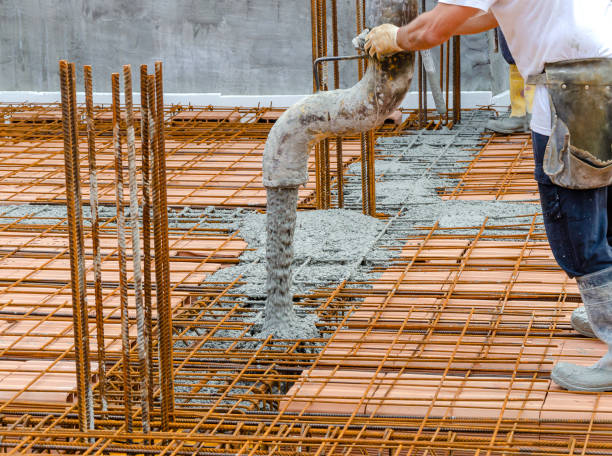Formwork Revolution: Creating Castings with Precision
Casting Concrete Formwork: The Science And Art Of Making A Beautiful Structure
Concrete casting formwork is a process that involves the use of specialised materials to shape and hold wet concrete until it sets. It is an essential part of any construction project, where pre-cast concrete components are used. This process helps ensure each component has an accurate finish, with uniform levels and shapes.
Formwork comes in various materials such as steel or timber, which can be customised to specific shapes and sizes through cutting or welding. It is usually fixed together using screws, bolts or clamps so that the resulting structure can support the weight of wet concrete as it cures. Once finished, the formwork must be strong enough to withstand the pressure exerted by setting concrete without distorting its shape before it hardens completely.
Concrete casting formwork is a specialized process used to create concrete structures and shapes. It involves the construction of a temporary framework, or formwork, from timber or metal that is then filled with poured concrete. This technique allows for the creation of complex shapes and sizes in concrete structures such as columns, walls, beams and slabs. The purpose of the formwork is to support the wet concrete until it sets and gains enough strength to bear its own load.
Get Your Aluminum Support System Today
Formwork design and construction requires careful consideration of the shape desired, weight bearing capacity required, available materials, labor costs and safety precautions necessary for each project. Reusable forms are frequently used in this type of work due to their cost-effectiveness; however they must be properly maintained in order to ensure quality results every time they are used.
Concrete casting formwork is a process used to shape concrete into desired structures. It involves the use of moulds that are filled with wet cement and then left to cure and harden, resulting in a solid structure. Casting formwork is widely used throughout the construction industry due to its efficient ability to create complex shapes quickly and with minimal labour.
The first step in this process is selecting the right type of formwork for your application – wooden boards, steel frames and plastic forms all have different qualities that make them ideal for certain jobs. After selecting the appropriate formwork, it must be correctly installed so that it does not move during filling or curing stages. This can include using support props or braces, ensuring proper drainage channels are in place, and making sure all edges are sealed properly.
Alumlight Provides Light Modular Formwork Engineering Solutions
Concrete casting formwork is an essential part of the construction process. It is used to shape and pour concrete for structural, architectural and decorative elements in buildings, bridges, dams and other structures. Formwork is a temporary structure that serves as a mold for poured concrete until it sets.
Formwork can be made from different materials including steel, aluminum, timber or plastic sheets combined with strong braces. The type of formwork required depends on the complexity of the design or shape desired in the finished concrete element. For example, if curved shapes are needed then flexible formers may be necessary; however if straight lines are needed then rigid frames could be used. Formwork also needs to be designed with sufficient strength to withstand any changes in pressure caused by wetting and drying cycles during curing of the concrete as well as any movement caused by shifting temperatures during construction or post-construction phases.
aluminum support system | light modular formwork | post and beam construction
For more Info:- https://alumlight.co.il/en/

.jpg)


Comments
Post a Comment